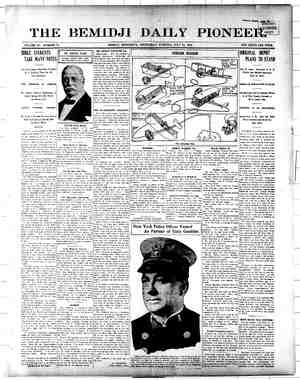Grand Rapids Herald-Review Newspaper, July 24, 1912, Page 22
You have reached the hourly page view limit. Unlock higher limit to our entire archive!
Subscribers enjoy higher page view limit, downloads, and exclusive features.
ee SUPPLEMENT TO GRAND RAPIDS HERALD-REVIEW, WEDNESDAY, JULY 24, 1912, ELEVEN octet stoefeete S Sp<teatectestectnctontesteetedinstoe serdececenbehetedenteteteeteteteteceete eebetetpefendeetecteegntetotnobngaceeeteteeteedeteteteebtesteteteeeteeteetedeteteteeteteaabeteedesdueboteendedeteteedneteteentnetecn te tntepecinne eeteceetetedeteceeindedeceetetetege LOPOODODOLDOIESESLS OSS OSI HOLLIES NS IOLOLEIDENIOODDOR IDI ED DO ILIUDO RIOT EIDE DEI TOT DOT OOH OO ORONO s 3 $3 $$ $ ; Some of our Lands have We have land for sale on = ¢ $a + % Sie ae » a : ¢ improvements on them easy terms to settlers ¢ ¢ i: orthern nesota Lands 7 ee a3 We have Lands in the best parts of Itasca, ei s ‘ ‘ ‘ as Aitkin and Cass Counties, Minnesota Ee : $ / 2 & Can sell you 40 acres or more, with ) ( The good, cheap lands is passing. : : o & small payment down and balance on ———%%X—— Better get some land. “It’s the only } $ 3 long time, with low rate of interest * ( thing to tie to”--“It’s the sure thing” # : ; ti Our land is good land, well located, on good roads, close to market —_{¢ 3, $% te ee Call or write et $3 — % $ $3 ° ° ee H olesale and Retail Lands: Fe: ze 23 et 7 COHASSET, MINNESOTA 7 a a ~ ae Of Meteo eee ESUSENESERESTSESS $ eee eRe Ree R RR RASERREREASRRERAARESEAASSSARSAAASSSRASSEREERERRESEAMARRRRARARRRRRRRRRRRRRRERIIS mote Opportunities are Varied in Itasca County Progress and prosperity—primitive log cabin in front; modern home in rear.—J. B. Borge- son’s place south of Coleraine. Playgrounds for the Nation. Game abounds in the woods in Itasca county and the lakes are alive with fish. That is very convenient for the man of small means who is making a farm in this country. He can keep himself in meat without going to market. It is to be taken into account also in figuring on the market for his produce. This section of Minnesota and especially Itasea county with its five hundred lakes, is coming to be the playground of the great Mississippi valley. People, are com- ing more and more from the heated cities to en- joy the delights of summer in the north woods, while in the fall the hunters are flocking to this district for duck and partridge and big game. The number of deer and moose that have been killed in the last few seasons is scandalous. Yet deer, at any rate, are more plentiful now than they were twenty years ago. One rea%n is that deer are protected while there is a bounty on wolves. It is a sober fact that some of the old settlers would be further ahead now if it was not so easy to pick up a living in the woods. No farmer is going to rely on that sort of subsistence. Still it adds an attraction ‘to the country, it helps out the poor man materially and it gives a new angle to the market for every settler. Clover Renews the Soil Clover sowed with grain on the experiment farm in 1911 cost $1.60 per acre for the seed. In October, the cows were turned in to pasture on the clover after the grain crop had been harvested. It gave them the equivalent of one day’s pasturage for thirty cows, to the acre, without hurting the chances of the crop this season. Reduced to but- Pail Factory at Cohasset. ter, it gave twenty-two pounds to the acre, worth $5.50, or more than three times the cost of the seed, with the hay crop still to come. Clover and timothy hay may be counted upon for four or five tons to the acre. From a small jag of clover, there was threshed out this spring clover seed worth better than $100. The second year the clover will give two crops, though it is often good practice to turn under the second crop. Fifteen Acres Cleared First Season. Often it has taken the settler years to get started; but it need not be such a slow job. Roy D. Shepard and James W. Gilbert came this spring from Prairie City, Iowa, and established them- selves on 100 acres in Blackberry township. They arrived on the land March 10, 1912, while the snow was still on the ground. They began at once cutting off the timber that was standing on a twelve acre tract and fol- lowed that by grubbing and clearing away the roois as the season opened. By planting time they had fifteen acres ready for the plow. Their first season on new land they put in nearly ten acres in potatoes and five acres in corn. They had brought cattle and horses with them from Iowa and the stock foraged for themselves all but the first few days. These energetic young men lived in tents at first but are already provid- ing themselves with permanent quarters. And this they have accomplished the first season. Type of the country school house in Itasca County. Pokegama Lake School —_— ---¥





